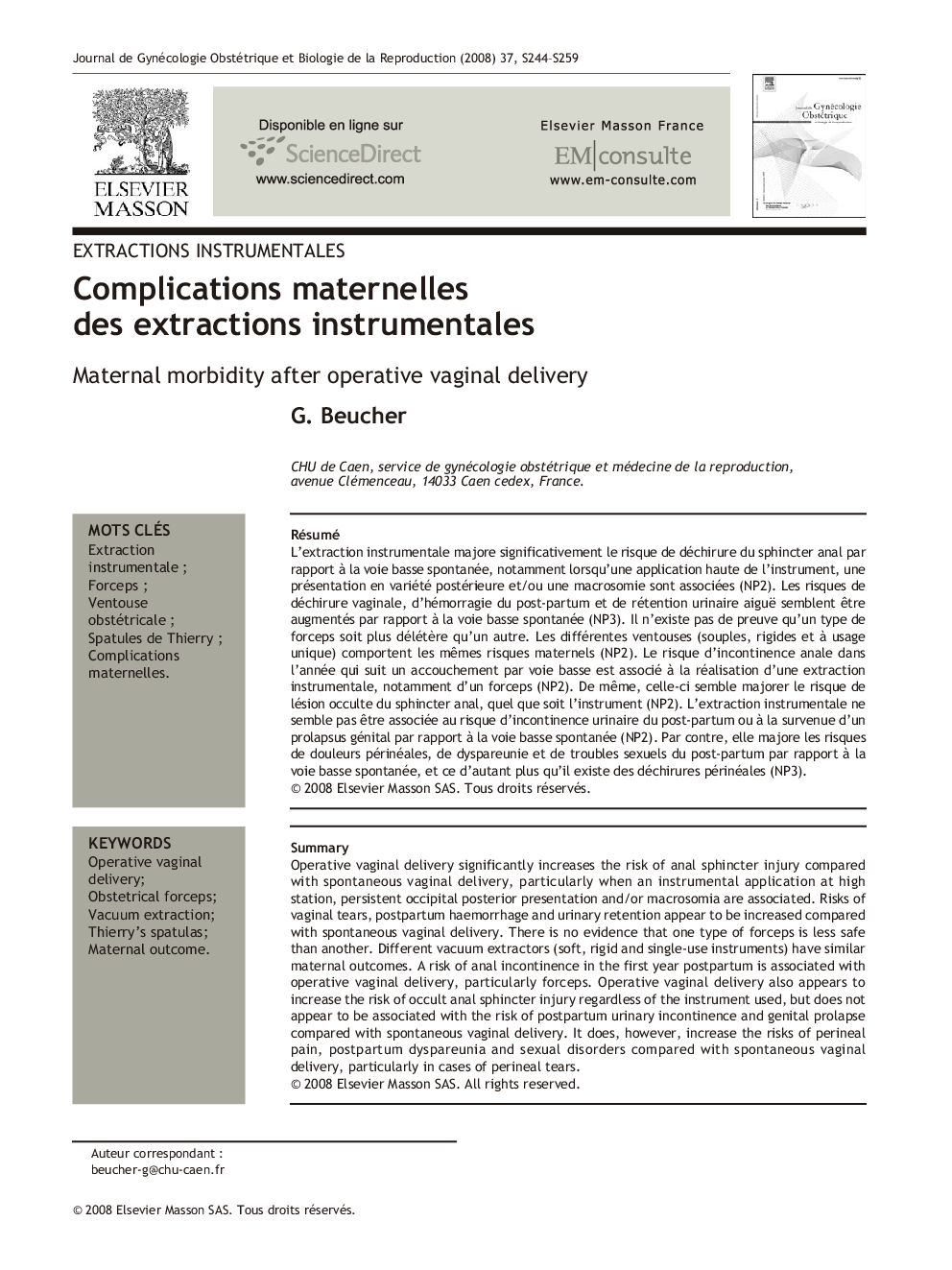| Article ID | Journal | Published Year | Pages | File Type |
|---|---|---|---|---|
| 3273457 | Journal de Gynécologie Obstétrique et Biologie de la Reproduction | 2008 | 16 Pages |
Abstract
Operative vaginal delivery significantly increases the risk of anal sphincter injury compared with spontaneous vaginal delivery, particularly when an instrumental application at high station, persistent occipital posterior presentation and/or macrosomia are associated. Risks of vaginal tears, postpartum haemorrhage and urinary retention appear to be increased compared with spontaneous vaginal delivery. There is no evidence that one type of forceps is less safe than another. Different vacuum extractors (soft, rigid and single-use instruments) have similar maternal outcomes. A risk of anal incontinence in the first year postpartum is associated with operative vaginal delivery, particularly forceps. Operative vaginal delivery also appears to increase the risk of occult anal sphincter injury regardless of the instrument used, but does not appear to be associated with the risk of postpartum urinary incontinence and genital prolapse compared with spontaneous vaginal delivery. It does, however, increase the risks of perineal pain, postpartum dyspareunia and sexual disorders compared with spontaneous vaginal delivery, particularly in cases of perineal tears.
Keywords
Related Topics
Health Sciences
Medicine and Dentistry
Endocrinology, Diabetes and Metabolism
Authors
G. Beucher,
